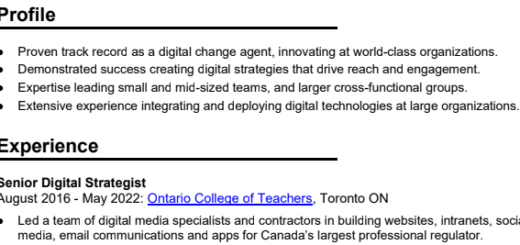What Do Accessibility and Car Keys Have in Common?
Accessibility makes everything on the web much more awesome, because (much like its cousin, usability) it prioritizes function over form. Why is that awesome? Because websites do the opposite far too often, prioritizing form over function, even though users care a lot less about how a site looks vs. how easy it is to use. Websites aren’t coffee table books: no one visits them to marvel at their graceful design. People visit them to find information and solve problems. The easier they can do that, the happier they are, and happy users are a good thing.
It’s easy to understand why so many sites elevate form over function when you think about who ultimately calls the design shots: a client, either internal or external. You can pretty much guarantee that person’s neither a usability nor an accessibility expert, and thus won’t have the skills to evaluate a site’s functionality. They don’t speak that language. However, everyone speaks the language of “That looks cool,” “I think it’d look better in fuchsia than turquoise” and “Can we make it look edgier? It needs to ‘pop’.” They may not be able to evaluate how well a site works, but they’ll tell you what they think of the design in a split second.
Stop me if you’ve heard this one
There’s an old joke that illustrates the point: late at night a woman comes across a man crouching over the sidewalk, scouring the concrete for something.
“What are you doing?” she asks. “Looking for my car keys! I dropped them and can’t find them anywhere,” he says. Taking pity on him the woman says, “I’ll help you look.”
After a good ten minutes of searching, the woman straightens up and exclaims, “I’m sorry, but I just can’t find them anywhere. Where exactly did you lose them?”
“Down there,” the man says, pointing to the dark end of the sidewalk where the streetlight has burnt out.
“Down there?” demands the woman, exasperated. “Why are we searching over here if you lost your keys down there?!”
“I can’t see anything down there!” the man replies.
Making sense of it all
We use the senses and abilities available to us, but that doesn’t make them the right ones to use. Accessibility and usability are intangible and difficult for non-experts to evaluate, but they’re critical for the success of your website. Even if the decider-in-chief knows nothing about usability or accessibility, don’t give them the opportunity use look and feel instead. That way madness lies. And gigantic banner images.
So what’s a poor web project manager to do? Accessibility is the law in the U.S. and much of Canada. That gives you an in, when fighting the good fight to prioritize function over form: mention that the law requires your site be accessible, and that there’s legal ramifications if it’s not. That’s usually gets management’s attention. With software such as Siteimprove, you can measure compliance, identify accessibility issues and track progress over time. Objective measures like that are key to convincing management: those kind of benchmarks are hard to argue with. Combine that with the legal requirement to be accessible, and you’ve got a one-two punch to help you put functionality first.
Functionality will always be more important than form: the web is a tool, not an art project. Accessibility can be the lever you need to make functionality not just your priority, but an institutional one.




